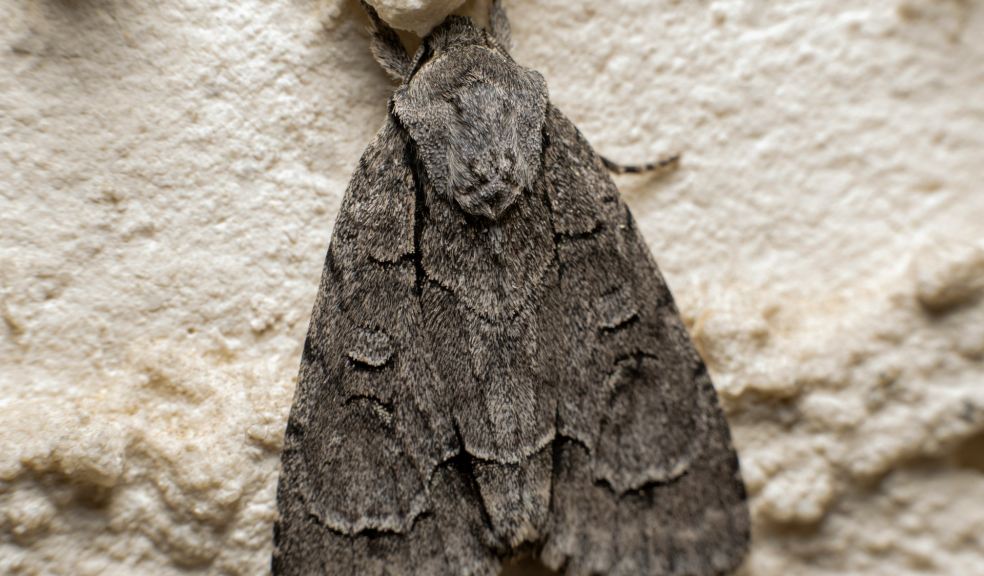
Why Moth Heat Treatment Works Wonders in Devon
You’ve probably opened a wardrobe in your Devon cottage only to watch tiny winged culprits flutter away, leaving woollens freckled with holes.
Before you resign yourself to cedar blocks and endless vacuuming, it helps to understand why targeted heat banishes them so effectively.
The science behind moth control using heat treatment explains how a precise, short blast can reach eggs hidden deep in floorboards where sprays rarely penetrate at all.
Moths: Persistent Household Nuisance
You’ve noticed little chewed holes in wool jumpers and suddenly realise clothes moths have moved in. Left unchecked, they’ll happily turn heirlooms into dust and frustration.
- Silent intruders: Adult clothes moths avoid light, hiding deep in wardrobes where you rarely disturb them.
- Larvae cause damage: It’s the caterpillar stage, not the fluttering adult, that devours fibres for weeks.
- Natural-fibre appetite: Wool, silk, cashmere, feathers, even prized taxidermy mounts provide perfect protein for unstoppable feeding.
- Traditional sprays struggle: Chemical residues often miss hidden eggs and force you to launder everything repeatedly.
- Heat stops everything: Raising temperatures above 56 °C eliminates eggs, larvae and adults in one decisive hit.
Understanding why moths thrive helps you appreciate why whole-room heat treatment outperforms piecemeal chemical spot sprays that never quite reach every crevice.
Spotting Early Infestation Signs
Act early and you’ll save cashmere, carpets and sanity. Recognising subtle indicators lets you schedule treatment before a minor problem becomes an expensive refurbishment.
Faint webbing around seams
Look along cuffs, collars and pleats. Silky threads resembling cobwebs often cling where larvae hide, giving you an early red flag.
Sand-like droppings
Tiny beige grains scattered on wardrobe floors are larval frass. Wipe away, return tomorrow; if they’re back, you’ve got active feeders.
Flightless beige moths
Clothes moths rarely fly into lights. You’ll usually find one crawling slowly on a wall, signalling many more remain tucked away.
Patchy thinning in rugs
Slide a hand across wool carpets. Rough, bare patches under furniture legs indicate larvae gnawed undisturbed for months.
Musty wardrobe odour
A stale, dusty smell builds when keratin is continuously digested. Trust your nose; it often notices an infestation before your eyes do.
Heat Treatment Fundamentals
Whole-room heat treatment raises every square centimetre above lethal temperatures, cooking moths without introducing toxins into delicate fabrics or your family’s lungs.
- Precise equipment: Indirect diesel heaters stay outside while ducting pipes hot, fume-free air safely indoors.
- Uniform circulation: High-powered fans constantly move air, preventing cool pockets where insects might survive.
- Real-time monitoring: Wireless sensors and infrared cameras verify every corner reaches 56 °C for two sustained hours.
- Chemical-free assurance: No residues, no repeat washing, no lingering odours—just immediate, lab-proven mortality.
- End-to-end life-stage kill: Eggs, larvae, pupae and adults each succumb, eliminating the comeback so common after sprays.
Step-By-Step Treatment Process
Knowing exactly what happens on treatment day calms nerves and helps you prepare rooms so technicians can work quickly and safely.
Arrival and survey
Your pest controller walks through, confirms hotspots and asks you to remove heat-sensitive electronics, wax items and aerosols for protection.
Room sealing and setup
Ducting snakes through ajar windows that are then insulated; high-capacity fans, sensors and tripods are arranged for balanced airflow.
Gradual temperature ramp
Technicians raise heat slowly, preventing structural stress while enticing larvae from hiding places before lethal temperatures finish them.
Thermal maintenance period
Every sensor must record at least 56 °C for two consecutive hours; staff constantly adjust airflow to eradicate cold spots.
Cool-down and inspection
Heaters switch off, fans remain until rooms reach safe re-entry levels. A final sweep confirms zero live activity and notes repairs.
Preparing Your Home
A little groundwork the evening before makes the treatment smoother, faster and often cheaper because technicians spend time heating, not tidying.
- Declutter surfaces: Remove loose clothing piles, cardboard boxes and toys so hot air can whirl freely through wardrobes and skirting boards.
- Vacuum thoroughly: Pay special attention to carpet edges and upholstered seams, then seal and bin the vacuum bag immediately outside.
- Protect valuables: Collect candles, cosmetics, paintings and musical instruments into a do-not-heat container ready for temporary relocation.
- Shift furniture: Pull sofas and chests five centimetres clear of walls to expose hidden felt pads and carpet for direct heat.
- Plan for pets: Arrange a playdate or walk; temperatures are uncomfortable, and doors must stay closed throughout the process.
Preparation is collaborative—you handle personal items; professionals handle the science, ensuring swift, uncompromised extermination without damage.
Expected Treatment Duration
Time matters when juggling work-from-home diaries. A typical Devon three-bed semi needs just one working day, minimising disruption compared with repeated spray visits.
Setup stage
Expect ninety minutes while equipment is unloaded, windows prepared and sensors calibrated—grab a coffee and ask final questions.
Heating phase
Two to three hours gradually lift internal temperatures; you’ll notice radiating warmth if you briefly enter unaffected rooms.
Lethal hold
Once 56 °C is consistent, technicians maintain the kill zone for about two further hours, ensuring egg protein completely denatures.
Cool-down window
Fans remain another hour, venting hot air outdoors. You can usually reclaim rooms late afternoon and sleep in your own bed.
Total commitment
From van arrival to sign-off photos, most single-property treatments finish within eight hours—far quicker than three insecticide appointments.
Post-Treatment Clothing Care
Heat leaves garments perfectly safe to wear, yet you’ll still want to freshen fibres and double-check sentimental items came through unscathed.
Airing and laundering
Open windows, let residual warmth escape, then tumble delicate knits on a cool cycle or simply shake outside to restore the loft.
Inspect susceptible items
Vintage fur, felt hats and leather patches deserve a once-over; slight dryness responds well to specialist conditioner or gentle steaming.
Repair minor damage
Catch small holes early with invisible darning or take treasured pieces to a tailor before fraying expands through daily wear.
Store smarter
Use breathable garment bags, cedar blocks and regular rotation so any future invaders struggle to locate long-term undisturbed snacks.
Confirm success
Set a pheromone trap for four weeks; its empty sticky surface is the simplest proof that heat treatment worked flawlessly.
Preventing Future Outbreaks
Treatment is only half the story; ongoing housekeeping habits deny moths the calm, dark corners they crave for breeding and feeding.
Routine wardrobe audits
Every month, shake seldom-worn coats, open suit bags and visually scan for new frass—movement alone deters egg-laying females.
Seasonal deep cleans
Spring and autumn, vacuum skirting boards, lift area rugs and launder stored linens on hot settings to break potential life cycles.
Seal entry points
Brush strips under loft hatches and tight-fitting window screens prevent invading adults blown in on warm summer evenings.
Temperature and humidity control
Keep wardrobes under 60 % humidity with dehumidifier sachets; dry environments make egg development slower and more vulnerable.
Professional check-ups
Annual inspections from a trusted local firm like Complete Ground Control catch early signs before they escalate—peace of mind delivered quickly.
Investment And Cost Factors
Budget matters, but compare one decisive heat treatment with the cumulative price—and stress—of multiple chemical call-backs over several months.
- Infestation size: A minor two-room job might cost £200, while whole-house missions scale towards £400 with more equipment.
- Property accessibility: Easy parking and ground-floor rooms speed loading, shaving labour charges from the final invoice.
- Guarantee length: Many Devon specialists provide six-month warranties, effectively spreading cost across half a year’s protection.
- Travel distance: Remote rural cottages sometimes incur mileage, though most firms service the county without surcharges.
- Method comparison: Heat is pricier upfront yet cheaper long term than repeat insecticide visits, as outlined by Angi’s 2025 analysis.
Check recent customer stories at Complete Ground Control to see real-world savings when infestations are eradicated in one day instead of three sprays.
Common Treatment Questions
Still hesitant? Clearing up lingering doubts ensures you step confidently into treatment day knowing belongings, pets and property are all secure.
Is heat safe for electronics?
Technicians ask you to remove laptops, consoles and phones; anything remaining inside is shielded with thermal blankets if absolutely necessary.
Will wallpaper peel?
Modern vinyl usually copes, but loose edges may lift. A quick post-treatment smoothing with adhesive resolves rare cosmetic hiccups.
Can I stay home?
You may remain in unaffected rooms, yet most clients take the opportunity for a seaside walk while heaters roar away.
What if moths return?
Reputable companies include free re-treatment within the warranty, provided preparation guidelines were followed and all rooms were initially heated.
Why is heat more expensive?
Equipment, diesel and intensive labour push costs up; however, the physical effort guarantees same-day, chemical-free relief many homeowners find invaluable.
Heat Ends Here
With heat, you strike moths at every life stage, leaving no chemical residues behind. Maintain vigilance, vacuum fibres, and seal garments promptly. Understanding how climate affects clothes moths helps you anticipate resurgence. Act quickly at first signs and you’ll keep wardrobes intact and your Devon home free from fluttering invaders.











